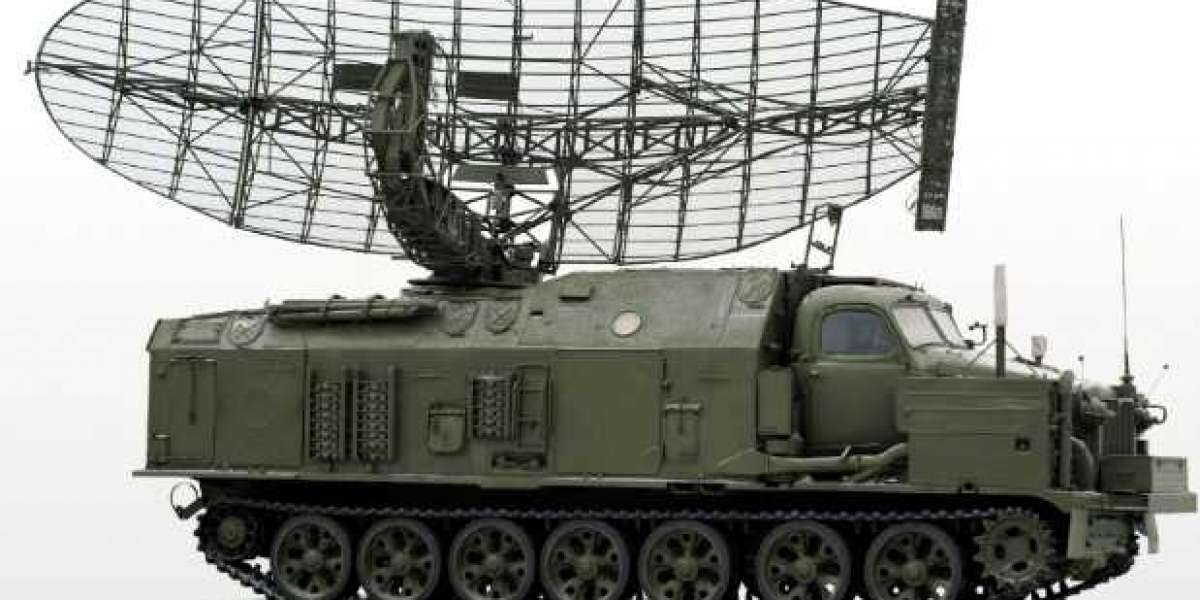The global military radar market size is projected to reach USD 22.06 billion by 2028, exhibiting a CAGR of 6.27% during the forecast period. Military radar is a crucial technology used by armed forces around the world for a wide range of purposes, including surveillance, reconnaissance, target detection, tracking, and navigation. Radar stands for "Radio Detection and Ranging," and it operates by emitting radio waves and detecting their reflections off of objects in the environment.
Informational Source:
https://www.fortunebusinessinsights.com/industry-reports/military-radar-market-101777
List of Key Companies Profiled in the Military Radar Market Report:
- Honeywell International (The U.S.)
- Airbus SAS (Netherlands)
- Israel Aerospace Industries (Israel)
- Thales Group (France)
- Northrop Grumman Corporation (The U.S.)
- Lockheed Martin Corporation (The U.S.)
- General Dynamics (The U.S.)
- Leonardo S.p.A. (Italy)
- BAE Systems (The U.K.)
- Saab AB (Sweden)
- Raytheon Technologies Corporation (The U.S.)
Market Restraint
Shifting Spending Priorities amid COVID-19 to Hinder Market Growth
The military radar market growth is expected to be hit by the COVID-19 pandemic as economic downturn in most parts of the world has forced countries to prioritize their spending. For example, in April 2020, the Indian Finance Ministry indicated cuts in defense budget that can go as high as 40%, slashing the USD 73.65 billion allocation earmarked by the government for 2020-21 by a substantial margin. According to the International Institute of Strategic Studies (IISS), even NATO member states will struggle to meet their target of expending 2% of GDP for defense, with spending in real terms falling even more steeply. Reduced military expenditures will lead to delays in projects and even cancellation of military modernization programs planned, halting the adoption of advanced technologies such as military radars. However, the silver lining is that defense spending by the US and China is expected to remain stable, which may offset some of the losses predicted by companies.
Regional Insights
Liberal Defense Spending to Bolster Market Growth in North America
North America, with its market size standing at USD 9.74 billion in 2019, is expected to dominate the military radar market share during the forecast period owing to consistent expansion of the defense budget by the US. Moreover, the region has a strong presence of some of the largest players in the defense sector such as Raytheon and Boeing, who are constantly developing cutting-edge military technologies.
Asia Pacific is anticipated to generate several opportunities for the market on account of modernization of defense arsenal by China and India, intensification of border disputes, and brokering of defense deals with the US and other developed nations. In Europe, the market will be mainly driven by the development of advanced military technologies by Germany, France, Italy, and the UK as well as replacement of obsolete systems with modern ones.
Here's an overview of military radar, including its various types, applications, and key features:
Types of Military Radar: Military radar systems can be categorized into several types based on their specific functions and capabilities:
a. Surveillance Radar: These radars are designed for wide-area coverage and provide early warning of incoming threats, such as aircraft, missiles, and ships. They are used for air defense and coastal surveillance.
b. Tracking Radar: Tracking radars are used to monitor the movement of targets with high precision, such as aircraft, missiles, and ships. They are essential for guiding weapons and interceptors.
c. Ground-Based Radar: These radars are fixed installations used for monitoring specific areas like airfields, borders, and coastlines. They can be used for air traffic control, border security, and early warning.
d. Airborne Radar: Installed on aircraft, airborne radar systems provide situational awareness, navigation, and targeting capabilities. They are crucial for military aircraft in both offensive and defensive roles.
e. Naval Radar: Naval vessels use radar for surface and air surveillance, navigation, and missile guidance. Shipborne radar systems are essential for maritime security.
f. Weather Radar: While not exclusive to the military, weather radar can provide valuable information for military operations, especially in planning and executing missions.
Key Features and Functions: Military radar systems are known for their unique features and functions, which make them highly valuable for defense purposes:
a. Range and Detection: Radar systems can detect and track objects over varying distances, from a few meters to hundreds of kilometers, depending on the system's capabilities.
b. Doppler Effect: Radar can measure the relative velocity of targets, allowing for the distinction between moving and stationary objects.
c. Target Identification: Advanced military radars can identify and classify targets based on their radar cross-section (RCS) and other characteristics.
d. Stealth Detection: Some radars are designed to detect stealthy or low-observable targets, such as stealth aircraft, by exploiting their weaknesses in radar absorption.
e. Electronic Countermeasures (ECM): Military radars are equipped with ECM capabilities to resist jamming and interference.
f. Data Integration: Modern military radar systems are often integrated with other sensor platforms and command and control systems to provide a comprehensive situational awareness picture.
Applications: Military radar serves various critical applications, including:
a. Air Defense: Detecting and tracking enemy aircraft and missiles for interception or threat assessment.
b. Ground Surveillance: Monitoring movements and activities on the ground, such as troop deployments and border security.
c. Naval Operations: Providing early warning of approaching vessels and aircraft, as well as guiding naval weapons.
d. Battlefield Management: Enhancing situational awareness and targeting capabilities for ground forces.
e. Search and Rescue: Assisting in locating downed aircraft or personnel in distress.
f. Navigation: Supporting military aircraft, ships, and ground vehicles in navigating and avoiding obstacles.
In summary, military radar is a diverse and essential technology for national defense. Its various types and applications ensure that it plays a pivotal role in maintaining military capabilities and safeguarding a nation's security. Advances in radar technology continue to improve performance and enable new capabilities in modern warfare.





